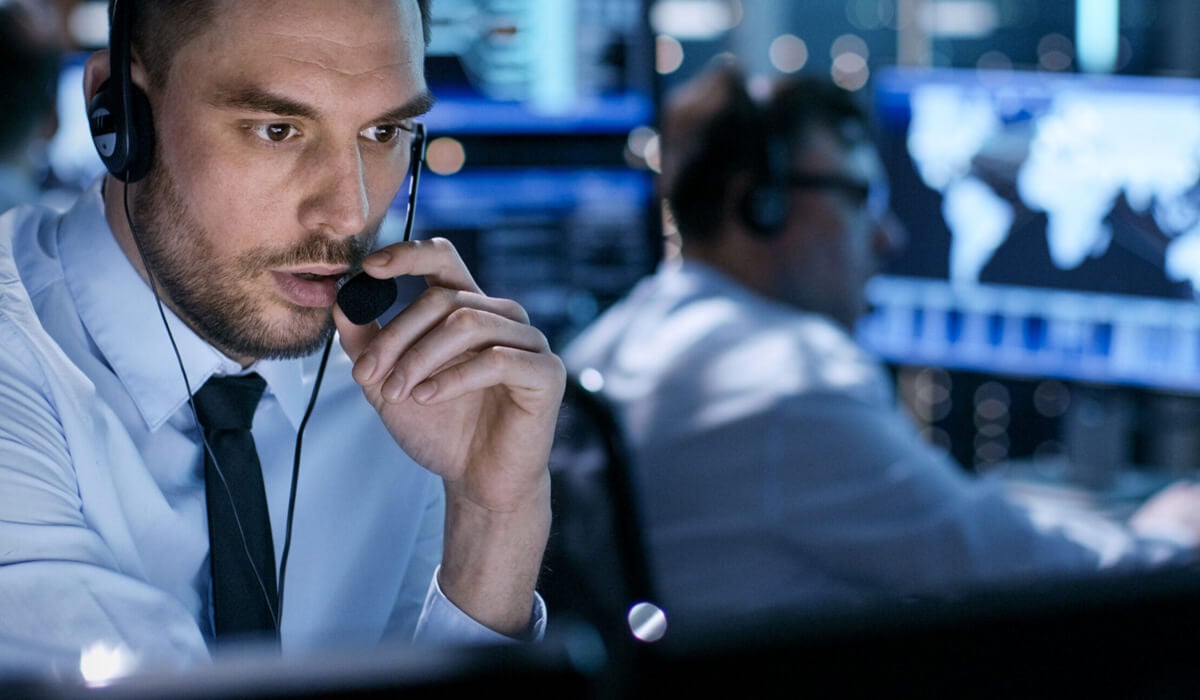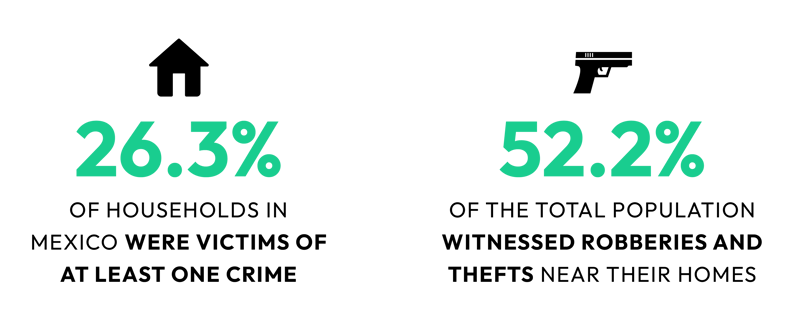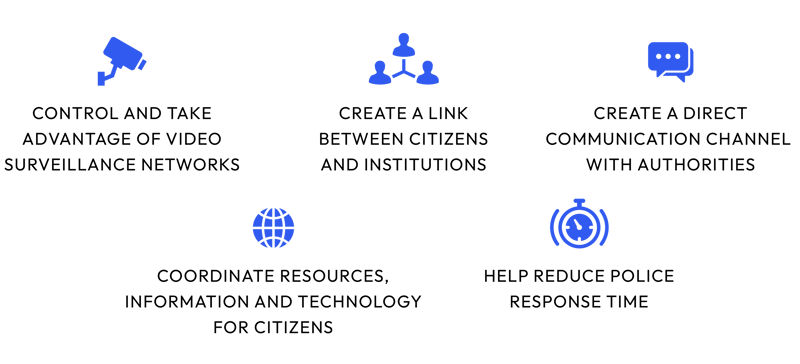
Command and Control Centers, usually called C2, C4 and C5 according to their infrastructure and operations, or Monitoring and Control Centers, are the public safety stations in charge of capturing information for operations, decision making and maintenance in matters of public safety, medical emergencies, civil protection, disaster and psychological care of the population.
Over the last thirty years, these public safety stations have become a fundamental pillar for the various organizations that protect and serve society. In this article, we will review their organization, a brief history of them, their importance, and their benefits.
Table of contents
- What are Command and Control Centers?
- The importance of Command and Control Centers
- Types of Command and Control Centers in Mexico
- Benefits of the C2, C4 and C5 in Mexico
WHAT ARE COMMAND AND CONTROL CENTERS?
The original definition of Command and Control goes back to military organizations in North America, and it referred to the way resources and personnel were managed during a military mission.
However, its tactics and technologies have been applied to several non-military organizations that also work with law enforcement, such as Police Departments
This set of organizational techniques is also used by Police Departments around the world to improve efficiency and to ensure the safety of their citizens. These tactics are planned and carried on from Command and Control Centers (or C2s), which are specialized buildings or rooms designed to coordinate and help the officers in the event of a crime, so that they can have a quick response to pursue and apprehend the criminals and make sure that the common citizen is safe.
Nowadays, Command and Control Centers integrate cutting-edge technology to collaborate with humans and facilitate the response to crimes. Technologies that have been implemented in these centers are networks of cameras throughout the cities, panic alarms, videowalls, phone lines, and even Artificial Intelligence that helps to detect and flag, in real-time, crimes being committed.
All these technologies shorten the reaction times of the police officers and create a stronger communication between the citizens and those in charge of ensuring their safety.
These Command and Control Centers have proven effective around the world to keep crimes off the streets or to capture criminals if a crime has already been committed. Mexico is one of the countries that have implemented these Centers, on which several law-enforcement institutions work together to lower the crime rates of the country.
THE IMPORTANCE OF COMMAND AND CONTROL CENTERS
According to a study done by the National Institute of Statistics and Geography of Mexico (INEGI), during the second semester of 2022, 26.3% of households throughout the country had at least one person who was a victim of a crime. Moreover, 52.2% of the total population witnessed or heard about robberies and thefts around their homes. These numbers only show how important it is to tackle the issue of public safety not only in the capital but on a nationwide scale.

Source: INEGI
This is why Command and Control Centers are important. They work together with institutions of different hierarchies such as Municipal, Federal, and State Police Departments or even the SEDENA (Secretary of National Defense) to tackle emergencies of several kinds that jeopardize the safety of the citizens. As we have mentioned before, direct communication with these can be achieved by dialing 911 from any phone.
In Mexico City, another way to approach the C5 during an emergency is through one of the more than 13,000 panic buttons spread throughout the city and which are integrated into multifunctional poles called STVs (Video-surveillance Technological System, in English) which also have seismic alert speakers and 4K cameras with 360° vision.
These strategies guarantee that there is a direct link between the regular citizens and the law enforcers 24/7 throughout the year.
Furthermore, the use of technologies such as videowalls within the Centers, as well as that of specialized software, eases the data transfer and the managing of information between the city cameras and the Command and Control Centers, but also within the several institutions that use that information.
The videowalls, for example, often display high-definition images that help detect important details when a crime is identified, such as license plates, street names, and faces. The officers that monitor these stations can send relevant images and data to the Police Department closer to the crime scene and, thus, make sure that a quick response is given to the situation.
Command and Control Centers have proven to be essential in matters of safety as they integrate cutting-edge technologies, which makes easier to collaborate with the officers from a strategically placed building, of easy access, and well-connected to the Police Departments, and other institutions through phone lines, internet, and radio frequencies.
This functional communication of the C2s is pivotal to strategizing and managing human and technological resources within the cities both to prevent crimes and to follow up crimes already committed; in summary, to convey in the citizens a feeling of safety.
TYPES OF COMMAND AND CONTROL CENTERS IN MEXICO
We have stated before that there are different types of Command and Control Centers. Each of these is equipped with different kinds of technologies and has a particular use within the network of vigilance and emergency response that serves the cities.
We will briefly explain each of them:
C2: The name stands for “Command and Control Center” and these are the regional units that monitor the surveillance footage from diverse areas of the city.
C4: The Command, Control, Communications, and Computing Center in México City is an institution similar to the C2. It also works as a video surveillance station, but it integrates computer technologies and the 911 phone line to establish communication with the citizens and coordinate efforts in safety matters with other C4s throughout the country.
C5: The Command, Control, Communications, Computing, and Citizen Contact integrates all the elements of a C2 or a C4, but it also operates at a nation, state, or township-wide scale, according to the needs of the population.
It should be noted that each of these centers may vary in terms of functions and infrastructure depending on the entity, the scope of its operations and public safety objectives.
BENEFITS OF THE C2, C4 AND C5 IN MEXICO
We have mentioned several of the benefits that these Command and Control Centers bring to the population throughout Mexico.

The following is a list of some of the benefits of Command and Control Centers:
- Their work is essential to monitor the footage of the thousands of cameras spread in the cities and to detect and prevent crimes in real-time.
- They create a link between the citizens and the proper law-enforcement institutions, as well as with other federal or state departments that tackle emergencies like seismic activities or fires.
- It creates a proper communication channel so that those that have sworn to protect the citizens can be reached and do their jobs more efficiently.
- They coordinate human resources, information, and technologies in service of the citizens and have proven invaluable in lowering the crime rates and in increasing the feeling of safety in several areas in the country.
- They use technology in their favor, which results in benefits such as wireless control of security devices, live footage of strategic areas, or immediate flagging of concerning issues.
- They help reduce the police response time and allow for precise and quick communication between police departments and other Command and Control Centers.
The outcome is an increase in the effectiveness of Police Departments and, thus, safer cities.
The use of cutting-edge technology is one of the main advantages of this century, and it is of the utmost importance to create a strong collaboration between machines and humans. As technology develops, new kinds of Command and Control Centers will emerge. Technologies like Artificial Intelligence can be integrated into these Centers in the future, and this will help humans to do their job, reducing significantly human error caused by fatigue or negligence.
If you want to learn more about the video surveillance systems used by these Command and Control Centers, visit this article.
Also, learn more about the importance of intelligent systems for public safety in our article here.